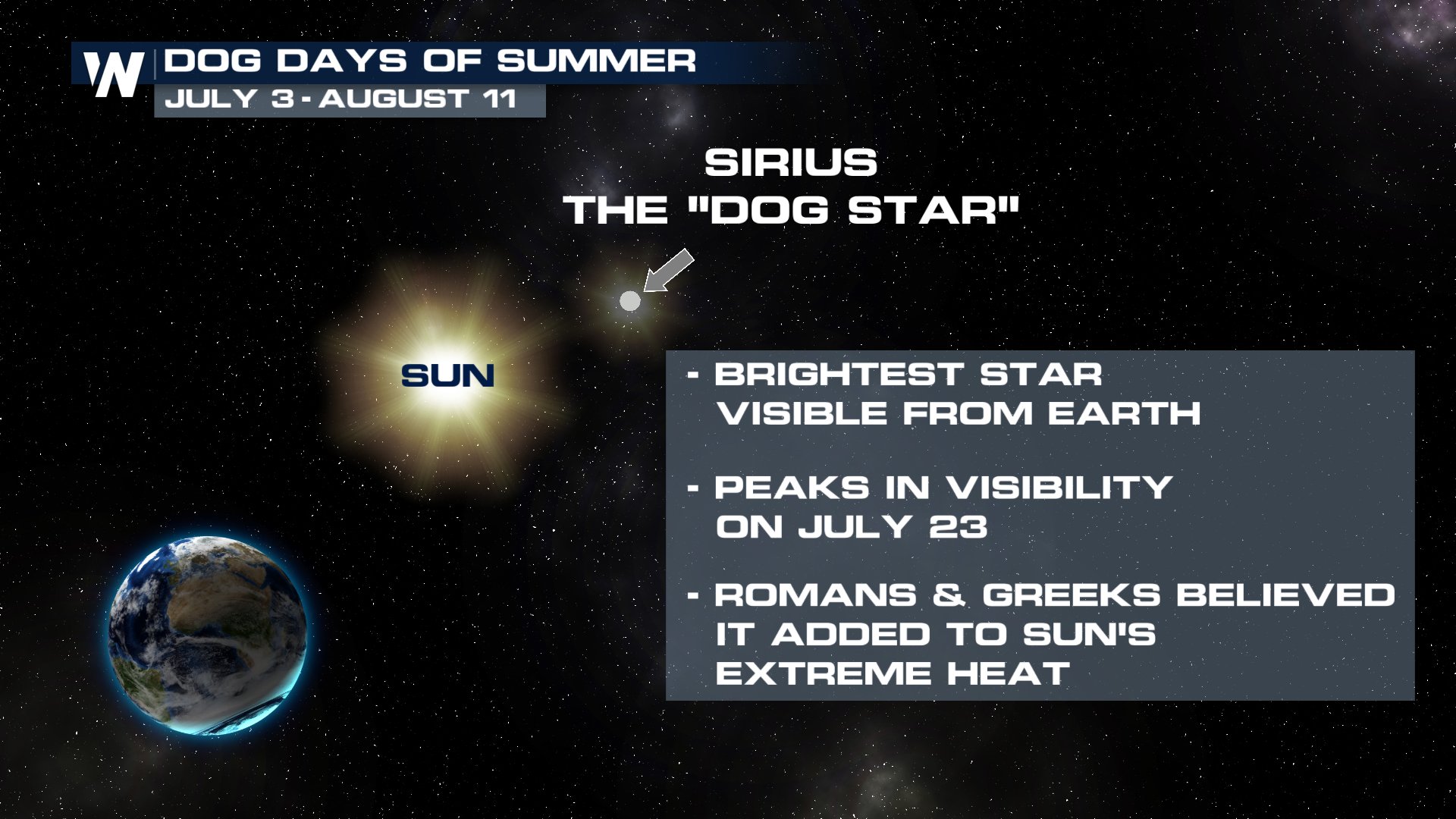The Peak of the Dog Days of Summer Has Arrived!
Today, July 23rd, is the peak of the Dog Days of Summer!
But what does that mean? Well, buckle up, turn on some Florence + The Machine, because we're exploring the history of this phrase and what exactly it means.
The Dog Days of Summer got its name from the "Dog Star" Sirius, the brightest star visible from Earth, outside of our Sun. The Ancient Greeks named it that because of its "scorching" appearance. The Greeks and later the Romans believed that this star, which is best viewed at rising dawn, brought extreme heat, drought, and even disease. The Romans postulated that the star's heat and brightness combined with the heat of the sun, resulting in hotter days. Ancient Egyptians (~3200 BC) also believed the appearance of this star brought with it extreme heat, but could also predict the Nile's flood season.

But how did the phrase "Dog Days of Summer" come to be?
Sirius is a part of the constellation Canis Major, which is Latin for the "Greater Dog", which was detailed in the works of Ptolemy back in the 2nd century. The phrase "Dog Days of Summer" became popularized once it was translated from Latin about 500 years ago. A once-feared point in the year in ancient times has become a household phrase as we developed a further understanding of astronomy, climatology, and meteorology. Sirius peaks in visibility from behind the sun on July 23rd, and the "dog days" fall 20 days before and after its peak. (July 3rd - August 11th)
If you want to view the star, it's best seen about 75 minutes before sunrise, looking East!